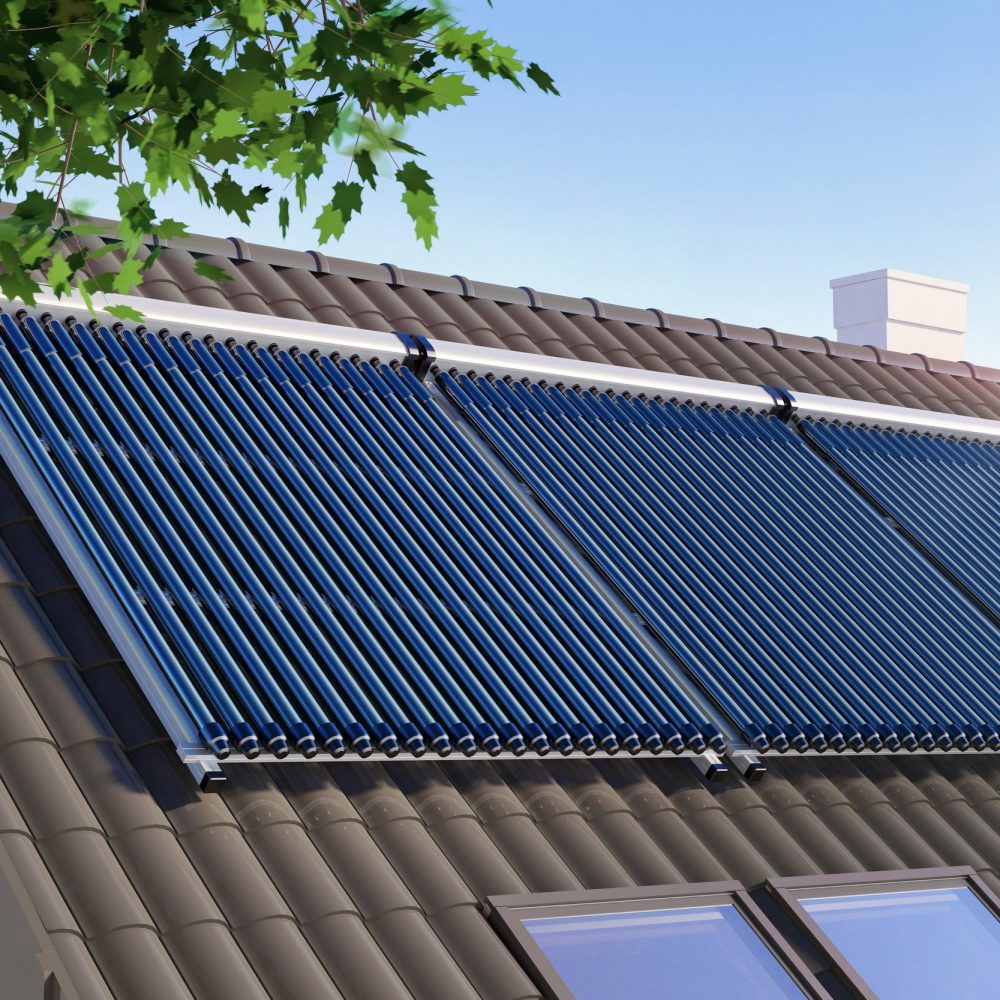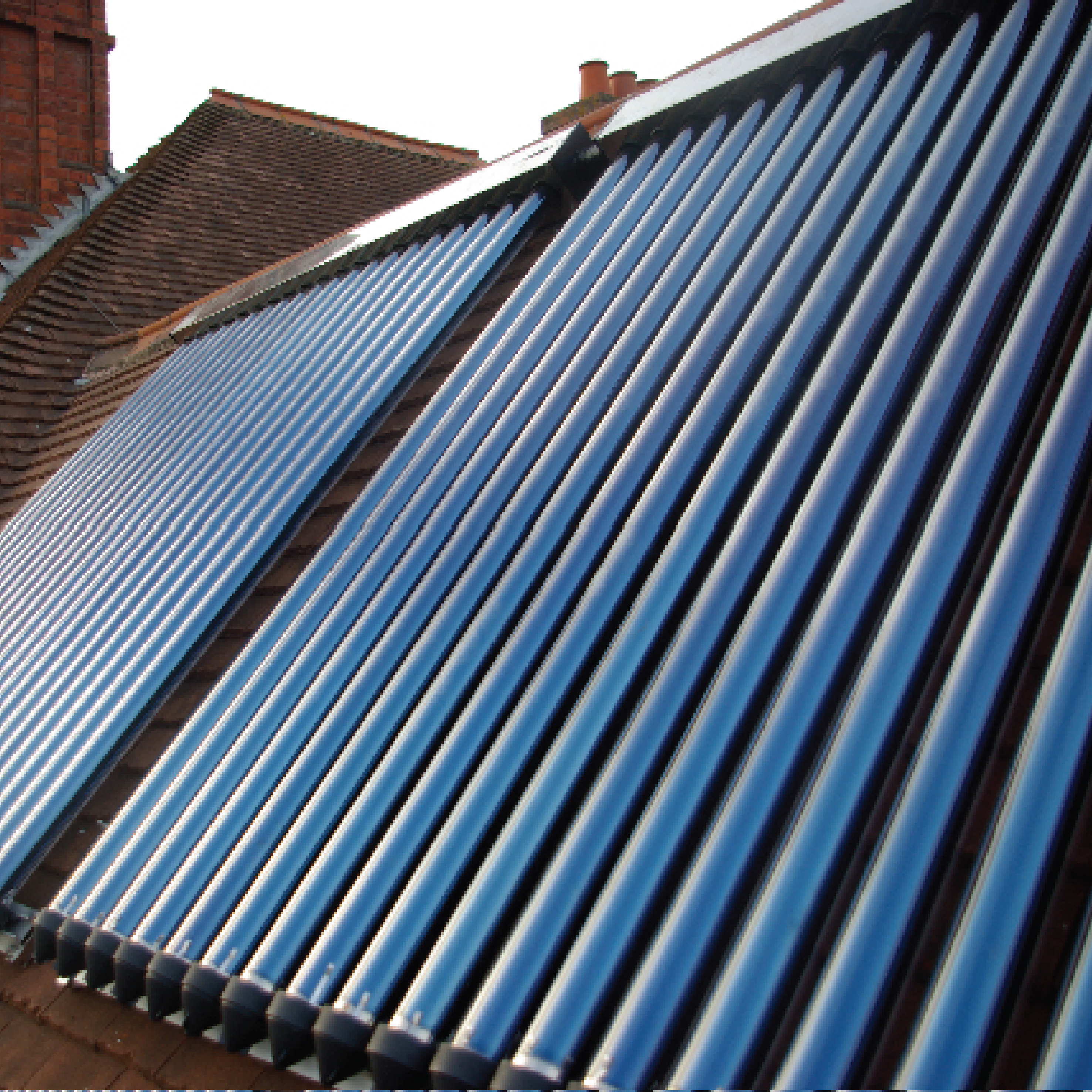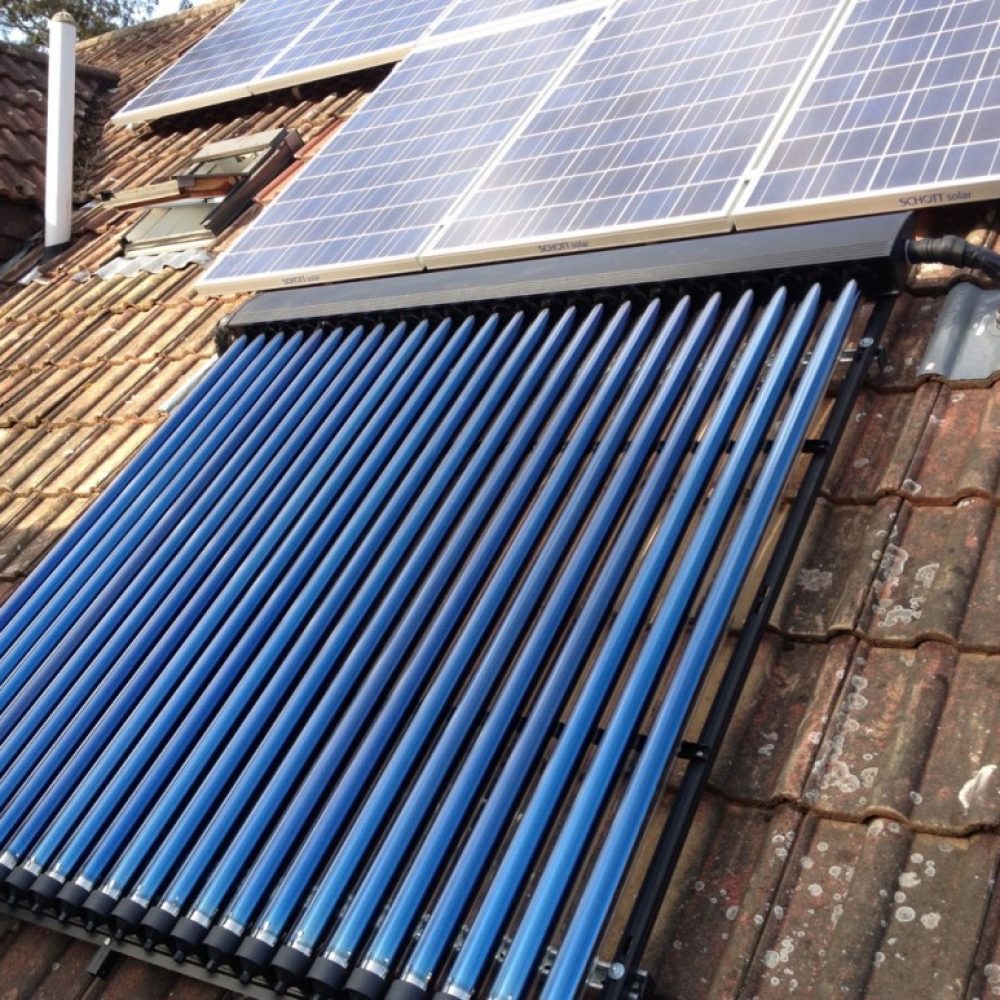How do solar thermal panels work?
Solar thermal panels, also known as solar collectors or solar thermal systems, are an innovative and environmentally-friendly way to harness the sun's energy and convert it into usable heat for various applications.
Unlike solar photovoltaic (PV) panels, which generate electricity, solar thermal panels focus on capturing and utilizing the sun’s radiant heat directly. This process offers a sustainable solution for heating water, space, and even generating electricity through thermal power plants. Let’s dive into the science behind solar thermal panels and understand how they work.


The Components of a Solar Thermal System
Solar Collectors: The heart of a solar thermal system, solar collectors are responsible for absorbing sunlight and converting it into heat energy. These panels are typically made of special materials designed to efficiently capture and retain solar radiation.
Heat Transfer Fluid: A heat transfer fluid, such as water or a specialized thermal fluid, circulates through the solar collectors, absorbing the heat they capture. This heated fluid is then transferred to the storage and distribution system.
Storage and Distribution System: The heated fluid from the solar collectors is stored in a well-insulated storage tank or sent directly to the target application, like heating water for domestic use or space heating. In some cases, the heat can also be converted into electricity using a steam turbine in a solar thermal power plant.
How Solar Thermal Panels Work: The Process
Absorption of Solar Radiation: Solar collectors are strategically positioned to maximize sun exposure. When sunlight strikes the surface of these panels, they contain a dark-colored absorbing material that converts sunlight into heat. This process is highly efficient, even in cloudy conditions, making solar thermal panels a reliable energy source.
Heat Transfer: As the solar collectors absorb solar radiation, they transfer the captured heat to the heat transfer fluid passing through their tubes or channels. The fluid’s temperature rises as it circulates through the collector, carrying the captured energy.
Storage and Distribution: The heated fluid is then directed to a well-insulated storage tank, where it can be stored for future use. In residential applications, this stored heat is often used to heat water for domestic purposes or for space heating. In larger installations or solar thermal power plants, the heat may be used to generate steam, which drives a turbine to produce electricity.
Backup Systems (Optional): To ensure a continuous supply of hot water or heat, especially during periods of low solar radiation, some solar thermal systems have backup heating sources. These backup systems, like electric or gas heaters, can provide additional heat when solar energy alone is insufficient.


Types of Solar Thermal Systems
Flat-Plate Collectors: The most common type of solar thermal panels, flat-plate collectors consist of dark, flat-plate absorbers that are covered with a transparent glass or plastic cover. They are suitable for residential and commercial water heating applications.
Evacuated Tube Collectors: These collectors use parallel rows of transparent glass tubes containing absorber tubes. The air is removed from the space between the tubes to create a vacuum, reducing heat loss and increasing efficiency. Evacuated tube collectors are ideal for colder climates.
Concentrated Solar Power (CSP) Systems: CSP systems use mirrors or lenses to concentrate sunlight onto a smaller area, generating very high temperatures. This intense heat is used to produce steam and drive turbines, generating electricity.
Benefits of Solar Thermal Panels
Renewable Energy Source: Solar thermal panels rely on abundant sunlight, making them a renewable and sustainable energy source with low environmental impact.
Energy Savings: By utilizing the sun’s energy for heating purposes, solar thermal panels can significantly reduce reliance on traditional energy sources, leading to cost savings.
Reduced Carbon Footprint: Solar thermal systems produce minimal greenhouse gas emissions, helping combat climate change and air pollution.
Diverse Applications: Solar thermal technology can be used for various applications, from domestic water heating to large-scale electricity generation in solar thermal power plants.

Find a renewable expert
for your next project
in your job come to you.
Frequently Asked Questions
Solar Thermal
The sun is amazingly powerful! The tiny fraction of the sun’s energy that actively reaches earth is enough to meet our energy needs many times over. In fact, every minute, enough energy arrives at earth to meet our energy demands for a whole year – if only we could harness it properly.
Our customers are always surprised at how much water our solar installations provide. Reliable studies have shown that systems installed in the UK can provide an average of about 70% of the hot water requirements over the year. Systems work surprisingly well in the winter (16-18% of hot water needs being met in December and January) and almost 100% of hot water needs being met in July and August.
Even when sunlight is diffused through cloud, you’d be surprised at the amount of heat that the solar panels can still collect. And nothing is wasted – all the heat collected is used to pre-heat the cold water entering from the mains. So even in winter you won’t be heating your water from scratch; your panels will work hard all year round to save you money.
Firstly, a solar collector (more commonly known as a solar panel) on the roof of your home traps the heat from the sun. The panel is filled with a non-toxic, special liquid that circulates within the panel and transfers heat to the hot water cylinder within your home. The temperature of the liquid is constantly monitored by an electronic controller. Whenever the collectors are hotter than the cylinder, the circulating pump is switched on to transfer the heat to the cylinder.
Panels work best when facing due South, yet they also work at a suitable yet reduced capacity facing due East or West as facing up to 90º from south will typically result in only a 20% drop in performance! Panels don’t need to be roof mounted either, we build frames to allow them to be ground, wall or roof mounted.
No planning permission is needed in the vast majority of cases. If you live in a conservation area or in a listed building planning permission may need to be obtained.
No regular system maintenance is required at all. The solar panels have a self cleaning coating, which means the rain will keep your panels clean for you.
What our clients say is important to us
Lydia Short
Vincent Smith
Thomas Campbell
Find a renewable expert
for your next project
in your job come to you.

